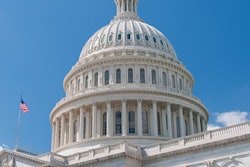
Approximately 6 million adults in the U.S. have lost oral health coverage as a result of no longer being employed due to the COVID-19 pandemic, a new report from CareQuest Institute for Oral Health found.
The institute surveyed more than 5,000 adults ages 18 and older in January and February via the National Opinion Research Center on the AmeriSpeak panel. The panel is designed to be representative of the U.S. population.
Among those who lost their dental insurance as a result of the pandemic, 65% reported an oral health symptom. These symptoms often stem from a disease affecting the teeth, gums, or other tissues in the oral cavity, the authors noted.
On top of that, an estimated 28 million adults delayed getting dental care because of one or more concerns. Common concerns included the cost of care, lack of insurance, or worries about the risk of exposure to COVID-19 at the practice.
Delaying oral healthcare can be risky and expensive, CareQuest said. Emergency department visits due to oral pain cost the U.S. $2.7 billion in 2017, and given the connection between oral health and chronic health conditions, this has serious implications for the broader healthcare system and overall health of U.S. adults.
The report projected that health systems could see a surge of patients with severe health issues that have gone untreated during the pandemic. These patients will likely disproportionately come from historically marginalized communities, noted Dr. Myechia Minter-Jordan, president and CEO of CareQuest Institute.
"This report should serve as notice to the [healthcare] provider community that as the pandemic recedes, the health system could face a tsunami of patients with severe health issues that have gone untreated over the last year," Minter-Jordan stated in a CareQuest release.
The institute published the report on April 8, and it is the first in a series. The reports will analyze a new survey -- titled State of Oral Health Equity in America -- that CareQuest will conduct annually to help health professionals and decision-makers better understand oral health equity in the U.S.



















